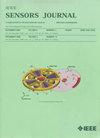MOA-YOLO:一种精确、实时、轻量级的基于yolov10的深海鱼类检测算法
IF 4.3
2区 综合性期刊
Q1 ENGINEERING, ELECTRICAL & ELECTRONIC
引用次数: 0
摘要
自主水下航行器(auv)具有自主完成水下任务的能力,是探测深海鱼类的有效手段。然而,对深海鱼类的研究受到退化环境中动态和小物体的影响,使得对深海的识别变得困难。本文提出了一种基于YOLOv10的精确、实时、轻量级的深海鱼类检测算法,命名为MOA-YOLO。首先,采用基于自适应标准化和归一化网络的水下图像增强算法对深海图像的颜色和对比度进行校正。然后,在MOA-YOLO的每个检测头的前面加入多头潜在注意(MLA)机制,提取更多的目标特征,增强目标与周围环境的区分;其次,引入了优化的归一化Wasserstein距离(ONWD)损失函数来取代完全交比并(CIOU)损失函数,提高了检测小目标的能力。最后,将主干和颈部的CBS和C2f模块分别替换为可变核卷积(AKConv)和AKC2f模块,以平衡检测速度和精度。对比实验分别在台式计算机和Nvidia Jetson Xavier NX上进行。与主流算法相比,MOA-YOLO的精度、召回率、平均精度(${\text {mAP}}_{{50}}$)、${\text {mAP}}_{\text{50:95}}$和帧数每秒(FPS)分别提高了3.1%、13.7%、8.0%、6.9%和8.8%。实验结果证明,MOA-YOLO在水下航行器探测深海鱼类方面具有优异的性能。代码可在https://github.com/hu167/code上获得本文章由计算机程序翻译,如有差异,请以英文原文为准。
MOA-YOLO: An Accurate, Real-Time, and Lightweight YOLOv10-Based Algorithm for Deep-Sea Fish Detection
The use of autonomous underwater vehicles (AUVs) is an efficient mean to detect deep-sea fishes due to their great ability to complete undersea mission autonomously. However, research on deep-sea fishes suffers from dynamic and small objects in degraded environments, making it difficult to recognize deep sea. In this article, an accurate, real-time, and lightweight deep-sea fish detection algorithm is proposed based on YOLOv10, named MOA-YOLO. First, an underwater image enhancement algorithm based on adaptive standardization and normalization networks is adopted to correct the color and contrast of deep-sea images. Then, the multihead latent attention (MLA) mechanism is added to the front of each detection head of MOA-YOLO to extract more object features, enhancing the discrimination between objects and surroundings. Next, an optimized normalized Wasserstein distance (ONWD) loss function is introduced to replace the complete intersection over union (CIOU) loss function, improving the ability to detect small objects. Finally, CBS and C2f modules in the backbone and neck are replaced with alterable kernel convolution (AKConv) and AKC2f modules, respectively, balancing the detection speed and accuracy. The comparative experiments are operated on both the desktop computer and Nvidia Jetson Xavier NX. Compared with mainstream algorithms, the precision, recall, mean average precision ( ${\text {mAP}}_{{50}}$ ), ${\text {mAP}}_{\text {50:95}}$ , and frames per second (FPS) of MOA-YOLO are improved by at least 3.1%, 13.7%, 8.0%, 6.9%, and 8.8%, respectively. The experimental results prove that MOA-YOLO achieves excellent performance on deep-sea fish detection with the AUV. The code is available at https://github.com/hu167/code
求助全文
通过发布文献求助,成功后即可免费获取论文全文。
去求助
来源期刊

IEEE Sensors Journal
工程技术-工程:电子与电气
CiteScore
7.70
自引率
14.00%
发文量
2058
审稿时长
5.2 months
期刊介绍:
The fields of interest of the IEEE Sensors Journal are the theory, design , fabrication, manufacturing and applications of devices for sensing and transducing physical, chemical and biological phenomena, with emphasis on the electronics and physics aspect of sensors and integrated sensors-actuators. IEEE Sensors Journal deals with the following:
-Sensor Phenomenology, Modelling, and Evaluation
-Sensor Materials, Processing, and Fabrication
-Chemical and Gas Sensors
-Microfluidics and Biosensors
-Optical Sensors
-Physical Sensors: Temperature, Mechanical, Magnetic, and others
-Acoustic and Ultrasonic Sensors
-Sensor Packaging
-Sensor Networks
-Sensor Applications
-Sensor Systems: Signals, Processing, and Interfaces
-Actuators and Sensor Power Systems
-Sensor Signal Processing for high precision and stability (amplification, filtering, linearization, modulation/demodulation) and under harsh conditions (EMC, radiation, humidity, temperature); energy consumption/harvesting
-Sensor Data Processing (soft computing with sensor data, e.g., pattern recognition, machine learning, evolutionary computation; sensor data fusion, processing of wave e.g., electromagnetic and acoustic; and non-wave, e.g., chemical, gravity, particle, thermal, radiative and non-radiative sensor data, detection, estimation and classification based on sensor data)
-Sensors in Industrial Practice
 求助内容:
求助内容: 应助结果提醒方式:
应助结果提醒方式:


